Amidst all the great pulp thrills and features in Sky Fighters, they ran a true story feature collected by Ace Williams wherein famous War Aces would tell actual true accounts of thrilling moments in their fighting lives! This time we have American Flyer Lieutenant Quentin Roosevelt’s most thrilling sky fight!
Quentin Roosevelt was born 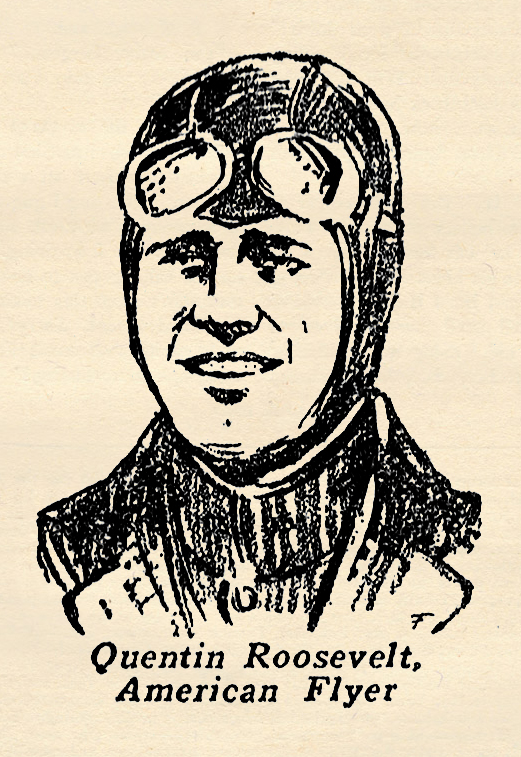 at Oyster Bay, N.Y., the fourth and last son of a famous fighting family, November 19th, 1897, six weeks after his illustrious father, Theodore Roosevelt, had left to fight for the freedom of Cuba. Although handicapped by a permanently injured back, he succeeded by dint of cunning and painful effort in fooling the medical examiners and being accepted for training as an aviator.
at Oyster Bay, N.Y., the fourth and last son of a famous fighting family, November 19th, 1897, six weeks after his illustrious father, Theodore Roosevelt, had left to fight for the freedom of Cuba. Although handicapped by a permanently injured back, he succeeded by dint of cunning and painful effort in fooling the medical examiners and being accepted for training as an aviator.
He was sent overseas July 13th, 1917, and assigned to the 95th Squadron of the First Pursuit Group. From the beginning he gave great promise of becoming a famous Ace—but his promising career was snuffed out before it really began when Sergeant Greber, famous German flyer, conquered him after a terrific battle.
Young Roosevelt died 15,000 feet up in the air. His tiny Nieuport turned over its back, streaked to earth and crashed on a hillside near the little French town of Chamery. He was buried where he fell with high military honors by the Germans. The account below is taken from one of the letters written to his mother.
MY FIRST VICTORY
by Lieut. Quentin Roosevelt • Sky Fighters, September 1935
I WAS cruising on high patrol with my flight when I spied far in the rear of the German lines a formation of seven enemy fighters. Though we were only three I though I might pull up a little and take a crack at them.
I had the altitude and advantage of the sun, and was sure they hadn’t seen me.
I pulled up, got within range, put my sights on the last man and let go. My tracer stream spewed all around him. I saw it distinctly. But for some strange reason he never even turned nor appeared to notice. It was like shooting through a ghost.
By that time the enemy formation began whirling up and down like dervishes. Spandau smoke trails snaked the sky around me and bullets clipped through my wings.
A Web of Fokkers
I stuck with my man, let go again. All of a sudden his tail went up and his ship went down in a vrille, spinning toward the cloud floor 3,000 meters below. I wanted to follow down after him, but his mates had cut me off from my flight and were making it hot on all sides.
I was so far within the enemy lines that I didn’t dare to tarry too long in a drawn-out fight because of my short gas supply, so I fought my way out of the web the Fokkers were spinning about me and ran for home.
Looking back over my shoulder I saw my victim spinning, and he was still spinning when he hit the cloud floor and disappeared. I do not expect to get credit for the victory (my first) because the fight took place too far behind the lines for it to be confirmed.
But, even so, I know now that I am able to hold my place as a pursuit pilot over the front lines.
The Grim War Game
At first I was doubtful, and the first time I was attacked I’ll confess I was scared. But in the heat of the battle I forgot that feeling. It becomes then a sort of grim game, a duel for points, with a victory scored when the opponent dies or is shot down out of control. But one doesn’t have time to think of death when the shooting starts. In the excitement of the moment there is no other thought but getting your sights on the other fellow and letting go with your guns.
I am glad we three took a crack at those German planes—even though we were outnumbered, for it certainly taught me many things. It is experiences of this sort that give one a real thrill.
Yes, to date this has been my most thrilling sky fight. Who knows what will come? In the frenzy of fighting, one never thinks of anything but the battle itself—and a fierce determination to do one’s best predominates over one’s thoughts!
EDITOR’S NOTE: Lieut. Roosevelt’s victory was officially confirmed two days after he was shot down.
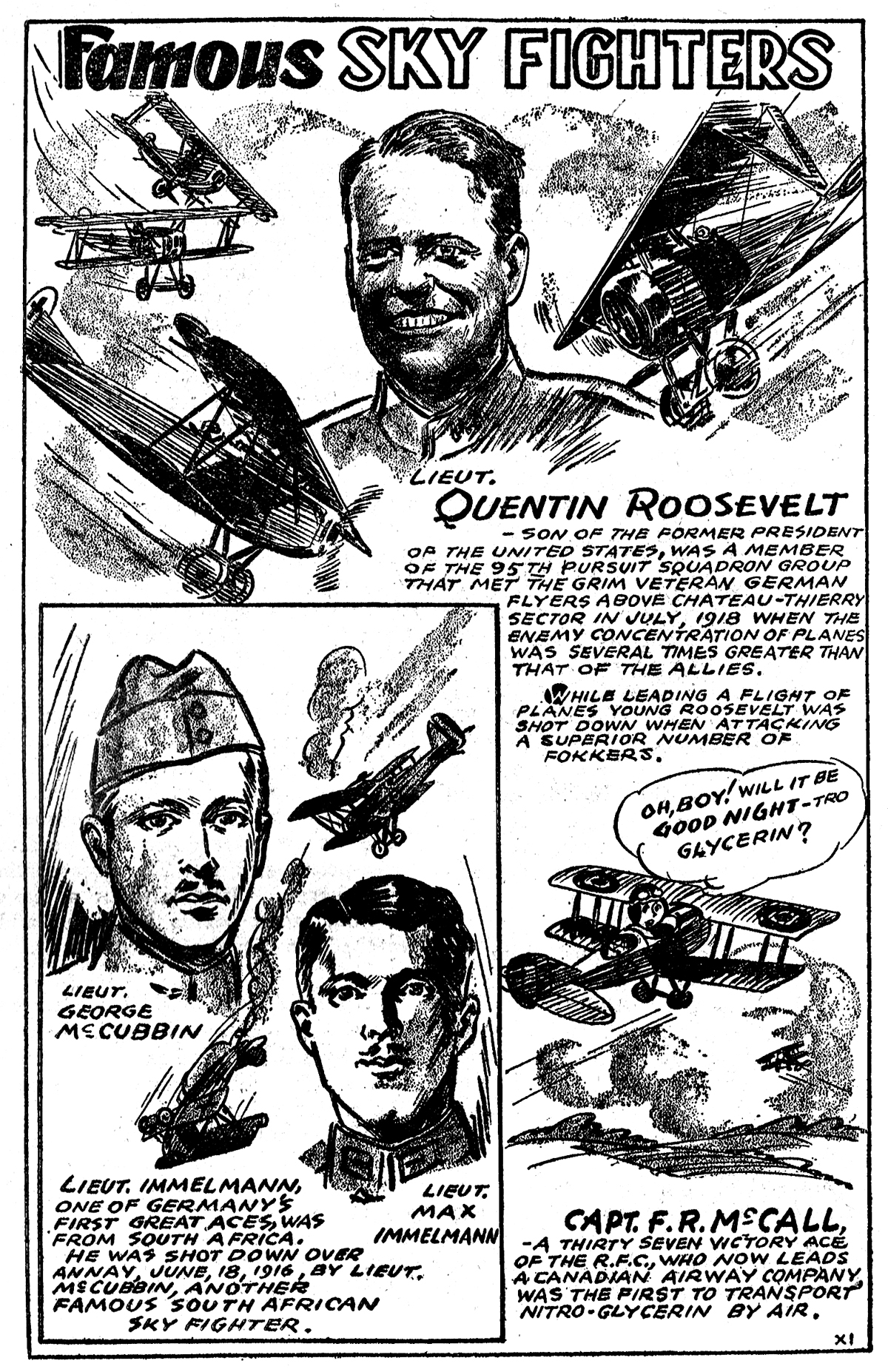
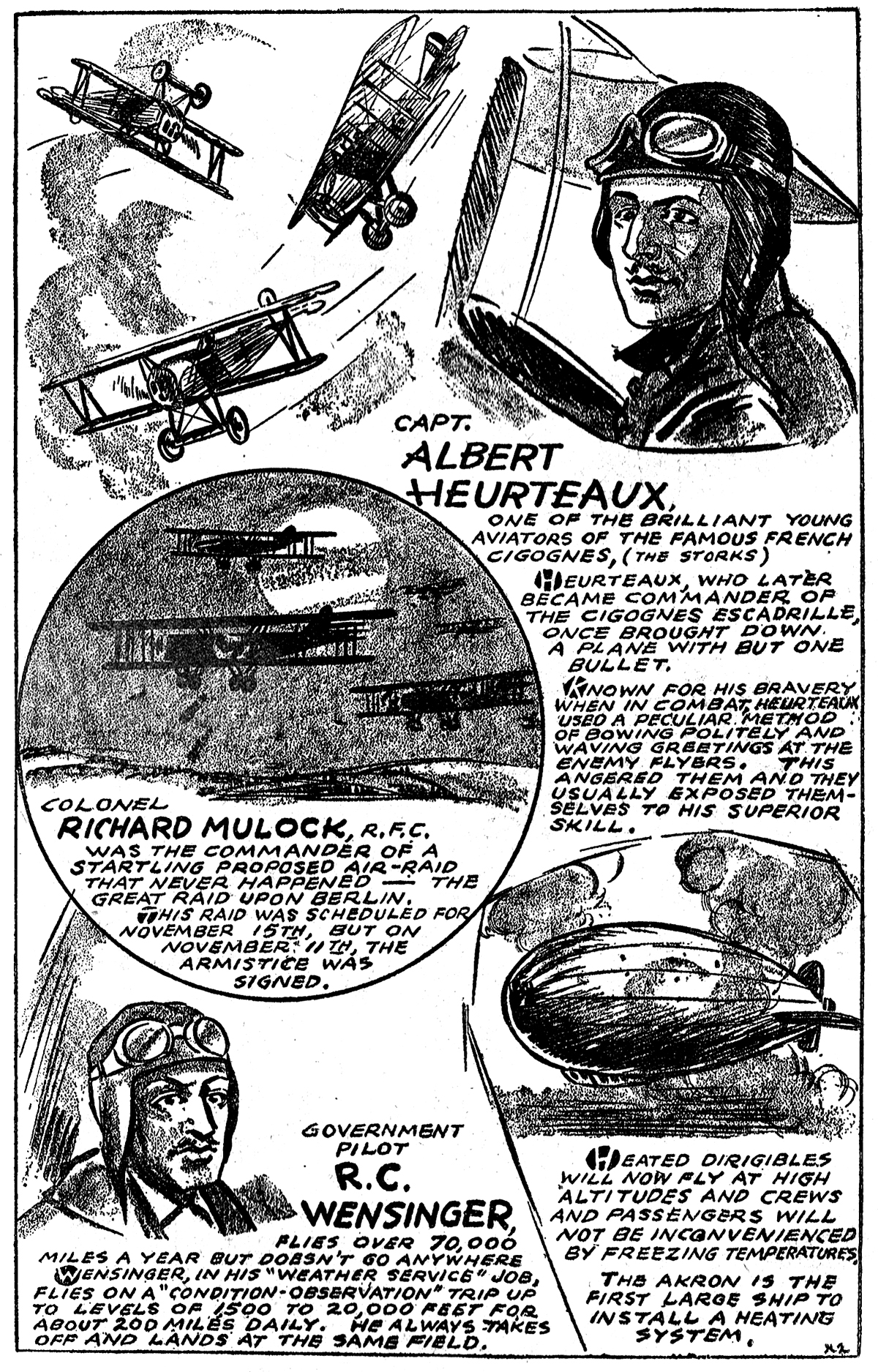





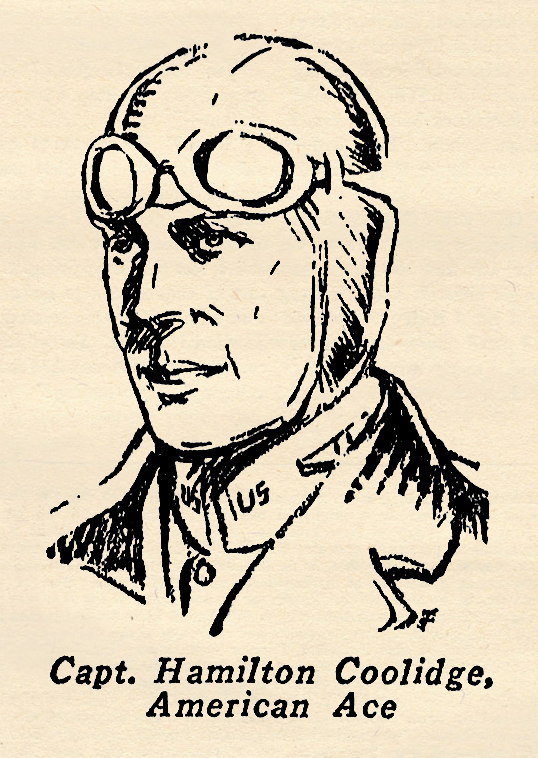 Hamilton Coolidge was well known throughout the land even before the war began. He enlisted in the aviation section of the Signal Corps and got his primary flight training at Mineola along with Quentln Roosevelt, his hoy-hood friend.
Hamilton Coolidge was well known throughout the land even before the war began. He enlisted in the aviation section of the Signal Corps and got his primary flight training at Mineola along with Quentln Roosevelt, his hoy-hood friend. at Oyster Bay, N.Y., the fourth and last son of a famous fighting family, November 19th, 1897, six weeks after his illustrious father, Theodore Roosevelt, had left to fight for the freedom of Cuba. Although handicapped by a permanently injured back, he succeeded by dint of cunning and painful effort in fooling the medical examiners and being accepted for training as an aviator.
at Oyster Bay, N.Y., the fourth and last son of a famous fighting family, November 19th, 1897, six weeks after his illustrious father, Theodore Roosevelt, had left to fight for the freedom of Cuba. Although handicapped by a permanently injured back, he succeeded by dint of cunning and painful effort in fooling the medical examiners and being accepted for training as an aviator.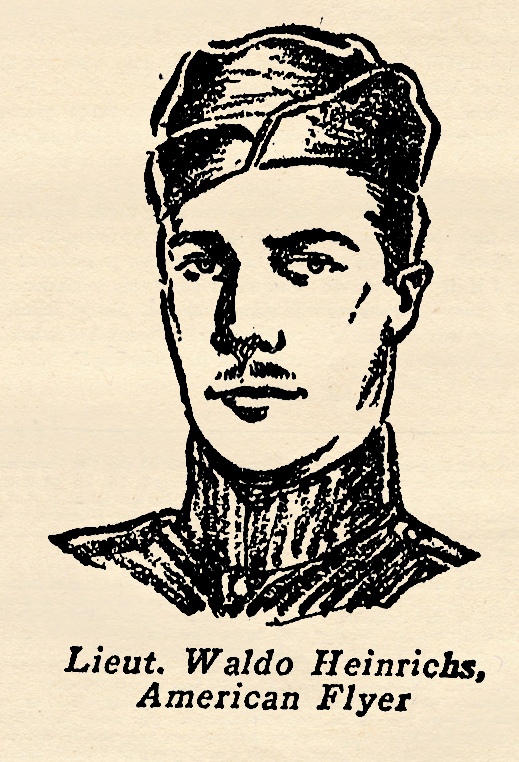 the first contingent of flying cadets to be graduated from the air combat school at Issoudun, France, the great flying field established by the American Air Service on foreign soil after the United States entered the war. He was one of tho original members of the famous 95th Pursuit Squadron, the first American squadron to do actual front line duty with the American Army. Among his squadron mates in the 95th were Lieutenant Quentin Roosevelt and Lieutenant Sumner Sewell.
the first contingent of flying cadets to be graduated from the air combat school at Issoudun, France, the great flying field established by the American Air Service on foreign soil after the United States entered the war. He was one of tho original members of the famous 95th Pursuit Squadron, the first American squadron to do actual front line duty with the American Army. Among his squadron mates in the 95th were Lieutenant Quentin Roosevelt and Lieutenant Sumner Sewell.